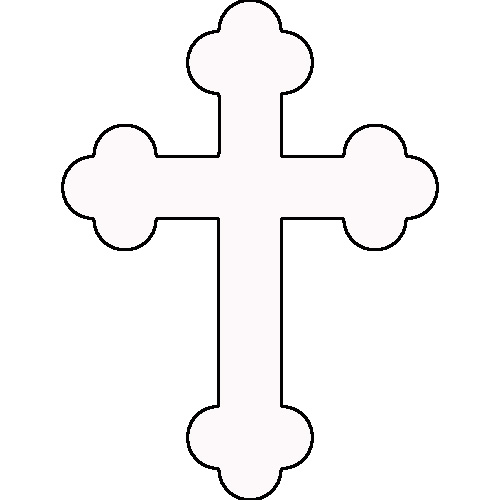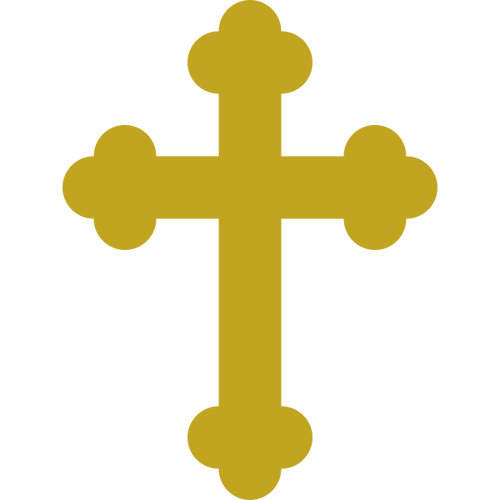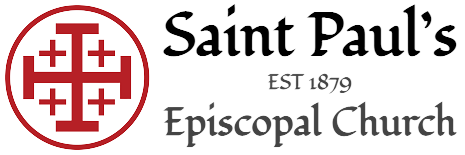
By the Rev. Dr. Winfred B. Vergara, missioner for Asiamerica Ministries in the Episcopal Church.
Many of the questions and answers that follow are based on the Episcopal Catechism, or Outline of the Faith, which can be found on pages 843-862 of the Book of Common Prayer (Church Hymnal Corporation, 1979). Please note that the Book of Common Prayer states that the catechism “is a commentary on the creeds, but is not meant to be a complete statement of belief and practices; rather, it is a point of departure for the teacher” (BCP, p. 844).
In that same spirit, the responses to the questions that follow are not offered as definitive answers, but rather as general background information on the traditions and customs of the Episcopal Church, and while content is factual and duly referenced, it does contain certain interpretations by the author and does not necessarily represent the official viewpoint of the Episcopal Church.– Fred Vergara (2010).
Liturgical Year
The calendar (BCP, pp. 15-33) orders the liturgical year of the Episcopal Church by identifying two cycles of feasts and holy days-one dependent upon the movable date of Easter Day and the other dependent upon the fixed date of Christmas, Dec. 25.
Easter Day is the first Sunday after the full moon that falls on or after Mar. 21. The sequence of all Sundays in the church year is based on the date of Easter. Tables and rules for finding the date of Easter Day, and other movable feasts and holy days are provided by the BCP, pp. 880-885. The date of Easter determines the beginning of the season of Lent on Ash Wednesday and the date of Pentecost on the fiftieth day of the Easter season.
The Sundays of Advent are always the four Sundays before Christmas Day. The church year begins on the first Sunday of Advent. The calendar also identifies and provides directions concerning the precedence and observance of principal feasts, Sundays, holy days (including Feasts of our Lord, other major feasts, and fasts), Days of Special Devotion, and Days of Optional Observance.
The calendar lists dates for the celebration of major feasts and lesser feasts by month and date. Appropriate Sunday Letters and Golden Numbers are also provided. (see BCP, pp. 880-881). The calendar also lists the titles of the seasons, Sundays, and major holy days observed in the Episcopal Church throughout the church year, including Advent season, Christmas season, Epiphany season, Lenten season, Holy Week, Easter season, the season after Pentecost, holy days, and National Days.
Advent

Blue
The first season of the church year, beginning with the fourth Sunday before Christmas and continuing through the day before Christmas. The name is derived from a Latin word for “coming.” The season is a time of preparation and expectation for the coming celebration of our Lord’s nativity, and for the final coming of Christ “in power and glory.”
Christmas

Gold
In the BCP, Christmas Day is one of the seven principal feasts. The Christmas season lasts twelve days, from Christmas Day until Jan. 5, the day before the Epiphany. The season includes Christmas Day, the First Sunday after Christmas Day, the Holy Name of Our Lord Jesus Christ, and may include the Second Sunday after Christmas Day. In many parishes, the main liturgical celebrations of Christmas take place on Christmas Eve. The BOS includes a variety of resources for use during Christmas, including a form for a Station at a Christmas Crèche, a form for a Christmas Festival of Lessons and Music, and seasonal blessings for use during the Christmas season.
Epiphany

White
The manifestation of Christ to the peoples of the earth. The winter solstice was kept on Jan. 6 at some places during the first centuries of the Christian Era. In opposition to pagan festivals, Christians chose this day to celebrate the various manifestations, or “epiphanies,” of Jesus’ divinity. These showings of his divinity included his birth, the coming of the Magi, his baptism, and the Wedding at Cana where he miraculously changed water into wine. The day was called “The Feast of Lights.” Celebration of the Son of God replaced celebration of the sun. Baptisms were done, and a season of preparation was instituted. It was later called Advent. The solstice was kept on Dec. 25 by the fourth century. Jesus’ birth was celebrated on this day in both eastern and western churches. The western church commemorated the coming of the Magi on Jan. 6. The eastern church continued to celebrate the Baptism of our Lord and the Wedding at Cana on Jan. 6. In the east the day was called “Theophany” (manifestation of God). The coming of the Magi is celebrated on the Feast of the Epiphany, Jan. 6, in the BCP. The Baptism of our Lord is celebrated on the First Sunday after the Epiphany.
Lent

Purple
Early Christians observed “a season of penitence and fasting” in preparation for the Paschal feast, or Pascha (BCP, pp. 264-265). The season now known as Lent (from an Old English word meaning “spring,” the time of lengthening days) has a long history. Originally, in places where Pascha was celebrated on a Sunday, the Paschal feast followed a fast of up to two days. In the third century this fast was lengthened to six days. Eventually this fast became attached to, or overlapped, another fast of forty days, in imitation of Christ’s fasting in the wilderness. The forty-day fast was especially important for converts to the faith who were preparing for baptism, and for those guilty of notorious sins who were being restored to the Christian assembly. In the western church the forty days of Lent extend from Ash Wednesday through Holy Saturday, omitting Sundays. The last three days of Lent are the sacred Triduum of Maundy Thursday, Good Friday, and Holy Saturday. Today Lent has reacquired its significance as the final preparation of adult candidates for baptism. Joining with them, all Christians are invited “to the observance of a holy Lent, by self-examination and repentance; by prayer, fasting, and self-denial; and by reading and meditating on God’s holy Word” (BCP, p. 265).
Easter

Gold
The feast of Christ’s resurrection. According to Bede, the word derives from the Anglo-Saxon spring goddess Eostre. Christians in England applied the word to the principal festival of the church year, both day and season.
Easter Day is the annual feast of the resurrection, the Pascha or Christian Passover, and the eighth day of cosmic creation. Faith in Jesus’ resurrection on the Sunday or third day following his crucifixion is at the heart of Christian belief. Easter sets the experience of springtime next to the ancient stories of deliverance and the proclamation of the risen Christ. In the west, Easter occurs on the first Sunday after the full moon on or after the vernal equinox. Easter always falls between Mar. 22 and Apr. 25 inclusive. Following Jewish custom, the feast begins at sunset on Easter Eve with the Great Vigil of Easter. The Eastern Orthodox Church celebrates Easter on the first Sunday after the Jewish Pesach or Passover (which follows the spring full moon). Although the two dates sometimes coincide, the eastern date is often one or more weeks later.
Pentecost

Red
The season after Pentecost, according to the calendar of the church year (BCP, p. 32). It begins on the Monday following Pentecost and continues through most of the summer and autumn. It may include as many as twenty-eight Sundays, depending on the date of Easter. This includes Trinity Sunday which is the First Sunday after Pentecost. The BCP provides proper collects and readings for the other Sundays of the season. These propers are numbered and designated for use on Sundays which are closest to specific days in the monthly calendar, whether before or after. For example, Proper 3 is designated for use, if needed, on the Sunday closest to May 25. Proper 29 is designated for use on the Sunday closest to Nov. 23. Prior to the 1979 BCP, Sundays in this long period of the church year were identified and counted in terms of the number of Sundays after Trinity Sunday instead of the number of Sundays after Pentecost. This period is also understood by some as “ordinary time,” a period of the church year not dedicated to a particular season or observance, as in the Roman Rite adopted after Vatican II. See Ordinary Time.
Ordinary Time

Green
This term is used in the Roman Catholic Church to indicate the parts of the liturgical year that are not included in the major seasons of the church calendar. Ordinary time includes the Monday after the Feast of the Baptism of our Lord through the Tuesday before Ash Wednesday, and the Monday after Pentecost through the Saturday before the First Sunday of Advent. A vigil or other service anticipating the First Sunday of Advent on the Saturday before that Sunday would also be included in the season of Advent. Ordinary time can be understood in terms of the living out of Christian faith and the meaning of Christ’s resurrection in ordinary life. The term “ordinary time” is not used in the Prayer Book, but the season after Pentecost can be considered ordinary time. It may be referred to as the “green season,” because green is the usual liturgical color for this period of the church year. The BCP provides numbered propers with collects and lectionary readings for the Sundays of the Season after Pentecost. The Epiphany season includes the Epiphany, the First Sunday after the Epiphany: the Baptism of our Lord Jesus Christ, and the Second Sunday through the Last Sunday after the Epiphany (BCP, p. 31). In view of the Epiphany themes that are presented throughout the Epiphany season, it should not be considered ordinary time. However, many parishes use green as the liturgical color for the Second Sunday through the Sunday prior to the Last Sunday after the Epiphany, and sometimes the Last Sunday after the Epiphany. Epiphany season and the season after Pentecost vary in length depending on the date of Easter (see BCP, pp. 884-885).
References:
Calendar of the Church Year. (n.d.). The Episcopal Church. https://www.episcopalchurch.org/calendar-church-year/
Vergara, W. B. (n.d.). Questions & Answers About the Episcopal Church. The Episcopal Diocese of Texas. https://www.epicenter.org/the-episcopal-faith/episcopal-faith/faq/
